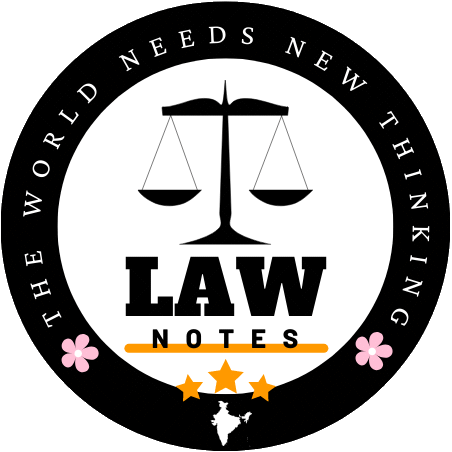Effects Of Non- Registration Of Trademarks
Introduction
A trade mark (popularly known as brand name in layman’s language) is a visual symbol which may be a word to indicate the source of the goods, a signature, name, device, label, numerals, or combination of colours used, or services, or other articles of commerce to distinguish it from other similar goods or services originating from another. It is a distinctive sign which identifies certain goods or services as those produced or provided by a specific person or enterprise. Its origin dates back to ancient times, when craftsmen reproduced their signatures, or “marks” on their artistic or utilitarian products. Over the years these marks evolved into today’s system of trade mark registration and protection. The system helps consumers identify and purchase a product or service because its nature and quality, indicated by its unique trade mark, meets their needs.

Definition:
As stated above, the definition of “trade mark” under Section 2(1)(zb) has been enlarged to mean a mark capable of being represented graphically and which is capable of distinguishing the goods or services of one person from others and may include shape of goods, their packaging and combination of colours and covers both goods and services.“Mark” includes a device, brand, heading, label, ticket, name, signature, word, letter, numeral, shape of goods, packaging or combination of colours or any combination thereof”. [Section 2(1)(m)].
Right To Exclusive Use The registration of a trademark shall give the registered proprietor of the trademark the exclusive right to the use of the trademark in relation to the goods or services in respect of which the trademark is registered as per section 28(1) of the Act. In other words after the registration of a trademark no one other than its registered proprietor or permitted user, is entitled to use the said trademark in relation to the goods or services in respect of which the trademark is registered.
Registration To Be Prima Facie Evidence Of Validity As per section 31 of the Act, the original registration of the trademark and of all subsequent assignments and transmissions of the trademark shall be prima facie evidence of the validity thereof in all legal proceedings relating to a trademark registered under the Act.
Right To Sue For Infringement If a mark that is identical with, or deceptively similar to a registered trademark is used by a person other than the registered proprietor or a permitted user, in the course of trade, in relation to goods or services in respect of which the trademark is registered and in such manner as to render the use of the mark likely to be taken as being used as a trademark, such person is said to have infringed the trademark according to section 29(1) of the Act.
The registered proprietor of the trademark has the exclusive right to sue for infringement of the trademark as per section 28(1) of the Act. Whereas per Section 27 (1) of the Act, no person shall have the right to sue for the infringement of an unregistered trademark. In a suit for infringement
In a suit for infringement of a trademark, the court could grant reliefs by way of an injunction order restraining the person who infringes the trademark from using the trademark and could also order the person who infringes the trademark to pay damages to the proprietor of the trademark for such infringement, according to section 135(1) of the Act.
The proprietor of a trademark has the option to register the same with the Registrar of Trademarks as per the provisions of the Act. Although registration is not mandatory, a registered trademark has certain advantages as opposed to an unregistered trademark. Thus, the effects of registration and non-registration of trademarks shall be discussed hereunder:
POSITION OF UNREGISTERED TRADE MARK
An unregistered trade mark may be assigned or transmitted with or without the goodwill of the business concern. Earlier such an assignment or transmission without goodwill used to be on a different footing. Section 39 of Trade Marks Act, 1999 has simplified the provisions in relation to assignment of unregistered trade mark without goodwill. It lays down that an unregistered trade mark may also be assigned with or without goodwill. Three conditions in Section 38(2) of Trade and Merchandise Marks Act, 1958 which were applicable on assignment of a trade mark without goodwill have been abrogated. Now, both unregistered and registered trade mark are subject to same conditions stated in Section 42, wherein such an assignee is required to apply to the Registrar within six months extendable by three months for directions with respect to advertisement. The assignee must issue the advertisement as directed for assignment to take effect, as the two limbs are cumulative.

Effect of non-use of Trademark:-
Trademark registration helps to establish an ownership’s to protect brand, logo of an entity or person. It help to distinguish your goods and services from other goods and services in the market. Result of Non-Use on Trademark both in India as well as in USA the main effect of non-use is removal of the trademark from the trademark registry. However, sometimes new goods or services are launched to the market using trademarks which have not been re-registered or which have not been used for a very long period of time. In such cases, most of the trademark proprietors keep quiet about the new trademark which infringes their existing mark because of the fear of the new user attacking the trademark on the ground of non-use and in such a case it would result in the trademark being completely removed from the registry. In India, rectification on the ground of non-use arises usually in the course of opposition proceedings or infringement action as a counterblast. Where the proprietor has not used the mark for more than five years and has not taken any steps to use it may tend not to object to the registration of similar marks by others or launch infringement proceedings.
The Hon’ble Supreme Court in the Kabushiki Kaisha Toshiba v. TOSIBA Appliances (2008) held that “The intention to use a trade mark sought to be registered must be genuine and real.” The division bench further explained that “when a trade mark is registered, it confers a valuable right. It seeks to distinguish the goods made by one person from those made by another. The person, therefore, who does not have any bona fide intention to use the trade mark, is not expected to get his product registered so as to prevent any other person from using the same.”
Recently in Proctor & Gamble Co. & Anr v. Shipra Laboratories (November, 2011), the Delhi High Court held that it is not in dispute that the defendant has been using the trade mark SAFE GUARD for sale of antiseptic creams. There is practically no difference between the trade mark SAFEGUARD and SAFE GUARD since no person is likely to notice the space between the words SAFE and GUARD…
The Supreme Court in Ramdev Food Products (P) Ltd. v. Arvind Bhai Rambai Patel, 2006 (8) SCC 726, held that a trade mark is the property of the manufacturer. The purpose of a trade mark is to establish a connection between the goods and the source thereof which would suggest the quality of goods. If the trade mark is registered, indisputably the use thereof by a person who is not otherwise authorised to do so would constitute infringement.
In M/s J K Oil Mills v. M/s Adani Wilmar Ltd., 2010 (42) PTC 639 (Del.), the Delhi High Court held that in order to constitute infringement under the provisions of Section 29 of the Trade Marks Act, it would be necessary to show that impugned trade mark (label) is identical or deceptively similar to the registered trade necessary to show that impugned trade mark (label) is identical or deceptively similar to the registered trade the impugned mark/label in respect of the goods and services which are not similar to those in respect of which the trade mark is registered.
Is the registration of a trademark compulsory?
No. Registration of a trademark is not compulsory. However, the registration is the prima facie evidence of the proprietorship of the trademark under registration.
Conclusion
A trade mark provides protection to the owner of the mark by ensuring the exclusive right to use it or to authorize another to use it in return for payment. Accordingly, both registered as well as unregistered trademarks are protectable in India by way of an infringement or passing off action in the court of law. The registration of a trade mark confers on the registered proprietor of the trade mark the exclusive right to use the trade mark in relation to the goods or services in respect of which the trade mark is registered.While registration of a trade mark is not compulsory, it offers better legal protection for an action for infringement

